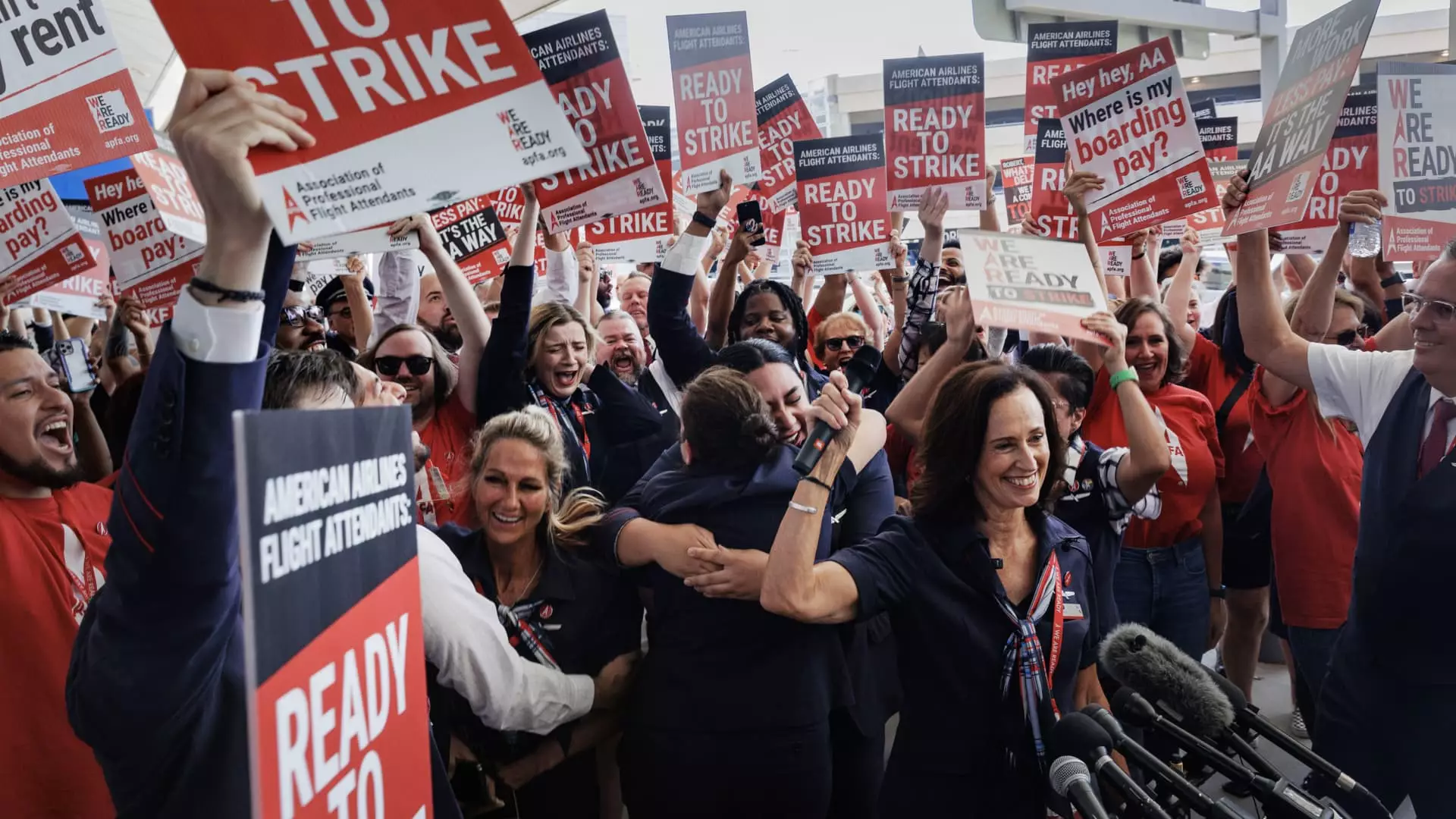In a significant development for the aviation industry, American Airlines flight attendants have ratified a new labor agreement that marks the end of extensive and often heated contract negotiations. With an overwhelming 87% of the voting cabin crew members supporting the deal, the union has set the stage for improved earnings and conditions for approximately 28,000 employees. The new contract, which comes into effect at the onset of October, guarantees immediate wage increases of up to 20.5%, alongside substantial retroactive pay. This achievement represents not just an economic uplift for flight attendants but also a breakthrough in labor relations for the airline.
The arduous negotiation process drew attention not only from internal stakeholders but also from federal officials. Transportation Secretary Pete Buttigieg and Labor Secretary Julie Su participated in discussions in June, facilitated by the National Mediation Board (NMB). With the looming threat of a potential strike by flight attendants if an agreement could not be reached, the involvement of over 160 lawmakers further highlighted the urgency of achieving a resolution. Such political and administrative pressure underscores the challenges faced by airline management, as they navigate complex labor relations while ensuring operational stability. American Airlines CEO Robert Isom expressed relief and pride in achieving this key negotiation milestone, emphasizing the company’s commitment to its employees.
The Flight Attendant Perspective
For the flight attendants, this contract represents a major win following years of negotiation delays exacerbated by the COVID-19 pandemic. The stress of living costs that have surged in recent years has compelled airline workers across the board to advocate for more favorable pay and working conditions. The sentiment among airline personnel, shared across various carriers, reflects a broader trend in labor movements aiming to rectify compensation discrepancies. The agreement with American Airlines could serve as a precedent, potentially influencing ongoing negotiations at other airlines, such as United Airlines, where talks are still active, and Alaska Airlines, which recently saw its tentative agreement rejected.
American Airlines’ successful negotiations occur in a broader labor landscape characterized by increased worker activism. Many industries, from automotive to Hollywood, have also experienced a surge in demands for better pay and protections, sometimes resulting in strikes or work stoppages. The movement is not just limited to airlines; over 33,000 Boeing workers are simultaneously casting votes on a contract proposal promising a 25% wage increase, with reports suggesting some dissatisfaction among the workforce. This highlights a critical moment in labor history, where workers united across sectors are pushing for substantial financial gains and recognition of their contributions.
The passage of the new labor agreement for American Airlines flight attendants is more than just a contractual change; it reflects a significant shift in the dynamics between labor and management in the airline industry. As both parties celebrate this historical agreement, it remains to be seen how this will influence upcoming negotiations at other airlines and whether it will spur a longer-term trend toward improved working conditions and compensation across the aviation sector. The success of this contract may well signal the dawn of a new era for labor relations at 30,000 feet and beyond.

Leave a Reply